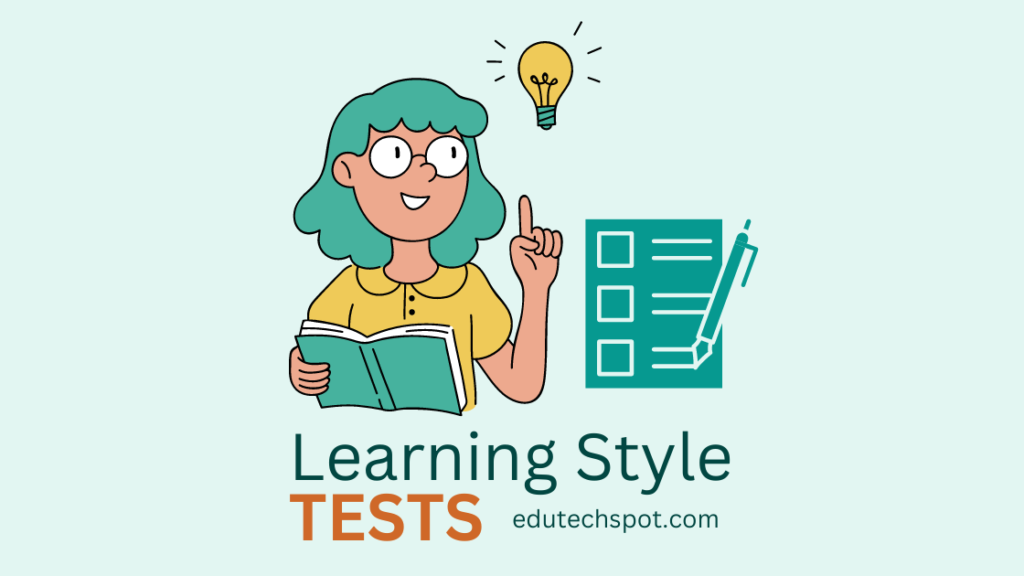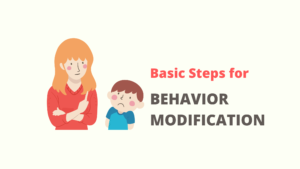
Learning Style Tests. Have you ever felt frustrated or bored during a learning session despite your best efforts to focus? This might be because the teaching method doesn’t match your preferred learning style.
In this guide, we will explore four of the most popular learning style tests: VARK, Felder-Silverman, MBTI, and Kolb. Understanding your learning style can help you learn more effectively and enjoy the process more.
Introduction
Learning styles refer to the ways in which individuals absorb, process, and retain information. There is no one-size-fits-all approach to learning as every person is unique, and different teaching methods work better for some than for others. By identifying your learning style, you can make informed decisions about how to approach your learning and increase your chances of success.
In this article, we will take a closer look at the VARK Questionnaire, the Felder-Silverman Learning Style Model, the Myers-Briggs Type Indicator (MBTI), and Kolb’s Learning Style Inventory. We will explore the features of each test and help you understand the pros and cons of each.
VARK Questionnaire
The VARK Questionnaire is a popular assessment tool used to determine an individual’s preferred learning style. It stands for Visual, Auditory, Reading/Writing, and Kinesthetic, which are the four categories of learning styles it measures.
The visual learning style refers to individuals who prefer to learn through visual aids such as images, diagrams, and videos. Auditory learners, on the other hand, prefer to learn through listening to lectures, discussions, and podcasts. Reading/writing learners prefer to learn through reading books, articles, and written instructions. Finally, kinesthetic learners prefer to learn through hands-on experiences, such as experimentation and practical activities.
Examples of learning activities for each category of the VARK questionnaire include:
- Visual: Watching educational videos, creating mind maps, and drawing diagrams
- Auditory: Listening to audio books, participating in group discussions, and attending lectures
- Reading/Writing: Reading textbooks, taking notes, and writing summaries
- Kinesthetic: Engaging in hands-on projects, conducting experiments, and physical activities
The VARK questionnaire is quick and easy to complete and provides a straightforward result indicating your preferred learning style. However, it’s important to keep in mind that individuals can exhibit characteristics of multiple learning styles, and the results of the VARK questionnaire may not accurately reflect an individual’s preferred way of learning in all situations.
Felder-Silverman Learning Style Model
The Felder-Silverman Learning Style Model is another widely used assessment tool to determine an individual’s preferred learning style. Unlike the VARK questionnaire, which categorizes learning styles into four distinct categories, the Felder-Silverman model recognizes that individuals can exhibit a combination of learning styles.
The model measures learning styles along two dimensions: (1) Perception and (2) Processing. Perception refers to the way individuals prefer to receive information, either through sensing (experiencing things through their senses) or intuition (understanding things through insights and abstract concepts). Processing refers to the way individuals prefer to process information, either through active experimentation (trying things out) or reflective observation (thinking things through).
This results in four combinations of learning styles:
- Active Experimenters: individuals who prefer to learn through hands-on activities and experimentation
- Reflective Observers: individuals who prefer to learn through thinking and contemplation
- Sensing Learners: individuals who prefer to learn through experiencing and observing
- Intuitive Learners: individuals who prefer to learn through insights and abstract concepts
The Felder-Silverman model provides a comprehensive view of an individual’s preferred learning style and allows for a more nuanced understanding of how an individual processes and receives information.
Myers-Briggs Type Indicator (MBTI)
The Myers-Briggs Type Indicator (MBTI) is a widely used assessment tool that determines an individual’s personality type and how they process information. The MBTI measures four dichotomies of personality traits: extraversion vs. introversion, sensing vs. intuition, thinking vs. feeling, and judging vs. perceiving.
The MBTI provides insight into an individual’s preferred learning style by examining their preferences for how they interact with the world and process information. For example, individuals who prefer extraversion may enjoy group work and collaboration, while individuals who prefer introversion may prefer solitary work and independent study.
The MBTI is a comprehensive tool that provides insight into an individual’s personality traits, communication style, and preferred learning style. However, it’s important to keep in mind that the MBTI is a self-reported assessment and may not accurately reflect an individual’s behavior in all situations.
Kolb’s Learning Style Inventory
Kolb’s Learning Style Inventory is a widely used assessment tool that measures an individual’s preferred learning style through a four-stage learning cycle. The cycle consists of concrete experiences, reflective observation, abstract conceptualization, and active experimentation.
The Kolb assessment measures an individual’s preference for each stage of the learning cycle and provides insight into their preferred learning style. For example, individuals who prefer concrete experiences and active experimentation are considered to have an “accommodating” learning style, while individuals who prefer abstract conceptualization and reflective observation are considered to have a “diverging” learning style.
The Kolb assessment provides a comprehensive view of an individual’s preferred learning style and how they process information. However, it’s important to keep in mind that individuals may exhibit different learning styles in different situations.
The VARK Questionnaire, Felder-Silverman Learning Style Model, Myers-Briggs Type Indicator (MBTI), and Kolb’s Learning Style Inventory are all popular assessments used to determine an individual’s preferred learning style. Each tool provides a unique perspective on how individuals process and receive information, and each has its own pros and cons.
It’s important to keep in mind that individuals can exhibit characteristics of multiple learning styles, and the results of these assessments may not accurately reflect an individual’s
behavior in all situations. Ultimately, the most effective way to determine your preferred learning style is through self-reflection and experimentation. Try out different learning methods and see what works best for you. This will help you to understand your strengths and weaknesses, and to tailor your learning strategies to best meet your needs.
FAQ
What is the VARK Questionnaire?
The VARK Questionnaire is a widely used assessment tool that determines an individual’s preferred learning style by categorizing them into four distinct categories: visual, auditory, reading/writing, and kinesthetic.
What is the Felder-Silverman Learning Style Model?
The Felder-Silverman Learning Style Model is a widely used assessment tool that determines an individual’s preferred learning style by measuring their preferences for how they receive information (sensing or intuition) and how they process information (active experimentation or reflective observation).
What is the Myers-Briggs Type Indicator (MBTI)?
The Myers-Briggs Type Indicator (MBTI) is a widely used assessment tool that determines an individual’s personality type and preferred learning style by measuring four dichotomies of personality traits: extraversion vs. introversion, sensing vs. intuition, thinking vs. feeling, and judging vs. perceiving.
What is Kolb’s Learning Style Inventory?
Kolb’s Learning Style Inventory is a widely used assessment tool that measures an individual’s preferred learning style through a four-stage learning cycle: concrete experiences, reflective observation, abstract conceptualization, and active experimentation.
Are the results of these assessments accurate?
The results of these assessments can provide a useful starting point for understanding your preferred learning style, but it’s important to keep in mind that individuals can exhibit characteristics of multiple learning styles, and the results may not accurately reflect an individual’s behavior in all situations. Self-reflection and experimentation is the best way to determine your preferred learning style.
Can these assessments help me improve my learning?
Yes, understanding your preferred learning style can help you to improve your learning by allowing you to tailor your learning strategies to meet your needs. For example, if you’re a visual learner, you may find it helpful to use mind maps, diagrams, and other visual aids when studying. If you’re an auditory learner, you may benefit from listening to lectures or discussions, or from participating in group study sessions.
Are these assessments free?
Some of the assessments, such as the VARK Questionnaire, are available for free online. Others, such as the Myers-Briggs Type Indicator (MBTI), may require a fee to access the full assessment or to receive a detailed report of your results. It’s important to research the options available and to carefully consider the costs and benefits of each assessment before making a decision.
Can these assessments be used for career planning and development?
Yes, understanding your preferred learning style can be useful for career planning and development by helping you to identify careers that are well-suited to your strengths and weaknesses, and by allowing you to tailor your professional development strategies to meet your needs. For example, if you’re a visual learner, you may be well-suited to careers in graphic design or advertising, while if you’re an auditory learner, you may be well-suited to careers in public speaking or education.
What I can underline from all the above is that understanding your preferred learning style can be a valuable tool for improving your learning and advancing your career. By taking one of the assessments discussed in this article, you can gain a better understanding of your strengths and weaknesses and tailor your learning strategies to best meet your needs. Don’t be afraid to experiment and try out different learning methods to find what works best for you.
MORE:

